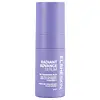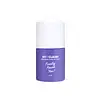What's inside
What's inside
 Key Ingredients
Key Ingredients

 Benefits
Benefits

 Concerns
Concerns

 Ingredients Side-by-side
Ingredients Side-by-side

Water
Skin ConditioningNiacinamide
SmoothingTranexamic Acid
AstringentButylene Glycol
HumectantPropanediol
SolventDipropylene Glycol
HumectantGlycerin
HumectantUndecylenoyl Phenylalanine
Skin ConditioningAlpha-Arbutin
AntioxidantArbutin
AntioxidantCitric Acid
BufferingSodium Sulfite
PreservativeAcetyl Tyrosine
Skin ConditioningSaxifraga Sarmentosa Extract
Skin ConditioningPaeonia Suffruticosa Root Extract
Skin ProtectingAminopropyl Ascorbyl Phosphate
AntioxidantScutellaria Baicalensis Root Extract
AstringentGlutathione
Sodium Palmitoyl Proline
Skin ConditioningNymphaea Alba Flower Extract
Skin ConditioningPEG-8
HumectantCaprylyl Glycol
EmollientHelianthus Annuus Seed Extract
Skin ConditioningPPG-1-PEG-9 Lauryl Glycol Ether
EmulsifyingHedera Helix Leaf Extract
Skin ConditioningPhytic Acid
Sodium Polyacrylate
AbsorbentDipeptide Diaminobutyroyl Benzylamide Diacetate
Skin ConditioningLactic Acid
BufferingPolyacrylamide
C13-14 Isoparaffin
EmollientLaureth-7
EmulsifyingHydroxyethyl Acrylate/Sodium Acryloyldimethyl Taurate Copolymer
Emulsion StabilisingHexapeptide-2
BleachingKojic Acid
AntioxidantAcetyl Glucosamine
Skin ConditioningArisaema Amurense Extract
Skin ConditioningDecyl Glucoside
Cleansing1,2-Hexanediol
Skin ConditioningPhenylethyl Resorcinol
AntioxidantEthylhexylglycerin
Skin ConditioningFarnesol
PerfumingLinalool
PerfumingAllantoin
Skin ConditioningDisodium EDTA
Glycyrrhiza Glabra Root Extract
BleachingSodium Bisulfite
AntioxidantSodium Metabisulfite
AntioxidantWater, Niacinamide, Tranexamic Acid, Butylene Glycol, Propanediol, Dipropylene Glycol, Glycerin, Undecylenoyl Phenylalanine, Alpha-Arbutin, Arbutin, Citric Acid, Sodium Sulfite, Acetyl Tyrosine, Saxifraga Sarmentosa Extract, Paeonia Suffruticosa Root Extract, Aminopropyl Ascorbyl Phosphate, Scutellaria Baicalensis Root Extract, Glutathione, Sodium Palmitoyl Proline, Nymphaea Alba Flower Extract, PEG-8, Caprylyl Glycol, Helianthus Annuus Seed Extract, PPG-1-PEG-9 Lauryl Glycol Ether, Hedera Helix Leaf Extract, Phytic Acid, Sodium Polyacrylate, Dipeptide Diaminobutyroyl Benzylamide Diacetate, Lactic Acid, Polyacrylamide, C13-14 Isoparaffin, Laureth-7, Hydroxyethyl Acrylate/Sodium Acryloyldimethyl Taurate Copolymer, Hexapeptide-2, Kojic Acid, Acetyl Glucosamine, Arisaema Amurense Extract, Decyl Glucoside, 1,2-Hexanediol, Phenylethyl Resorcinol, Ethylhexylglycerin, Farnesol, Linalool, Allantoin, Disodium EDTA, Glycyrrhiza Glabra Root Extract, Sodium Bisulfite, Sodium Metabisulfite
Water
Skin ConditioningCaprylic/Capric Triglyceride
MaskingGlycerin
HumectantButylene Glycol
HumectantDibutyl Adipate
EmollientSaccharide Isomerate
HumectantGlyceryl Stearate
EmollientParfum
MaskingKojic Acid
AntioxidantPEG-100 Stearate
Cysteamine Hcl
AntioxidantPEG-40 Hydrogenated Castor Oil
EmulsifyingLavandula Hybrida Herb Oil
PerfumingCetyl Alcohol
EmollientPEG-75 Stearate
Ceteareth-20
CleansingAllantoin
Skin ConditioningMorus Alba Bark Extract
Skin ConditioningPropylene Glycol
HumectantAloe Barbadensis Leaf Extract
EmollientGlycine Soja Seed Extract
Skin ConditioningCarbomer
Emulsion StabilisingPhenoxyethanol
PreservativeTriethanolamine
BufferingChlorphenesin
AntimicrobialPentaerythrityl Tetra-Di-T-Butyl Hydroxyhydrocinnamate
AntioxidantBHT
AntioxidantXanthan Gum
EmulsifyingCaprylyl Glycol
EmollientTocopheryl Acetate
AntioxidantCitric Acid
BufferingSodium Citrate
BufferingEthylhexylglycerin
Skin ConditioningWater, Caprylic/Capric Triglyceride, Glycerin, Butylene Glycol, Dibutyl Adipate, Saccharide Isomerate, Glyceryl Stearate, Parfum, Kojic Acid, PEG-100 Stearate, Cysteamine Hcl, PEG-40 Hydrogenated Castor Oil, Lavandula Hybrida Herb Oil, Cetyl Alcohol, PEG-75 Stearate, Ceteareth-20, Allantoin, Morus Alba Bark Extract, Propylene Glycol, Aloe Barbadensis Leaf Extract, Glycine Soja Seed Extract, Carbomer, Phenoxyethanol, Triethanolamine, Chlorphenesin, Pentaerythrityl Tetra-Di-T-Butyl Hydroxyhydrocinnamate, BHT, Xanthan Gum, Caprylyl Glycol, Tocopheryl Acetate, Citric Acid, Sodium Citrate, Ethylhexylglycerin
Ingredients Explained
These ingredients are found in both products.
Ingredients higher up in an ingredient list are typically present in a larger amount.
Allantoin is a soothing ingredient known for its protective and moisturizingg properties. Because of this, it is often added to products with strong active ingredients.
Studies show higher concentrations of this ingredient can promote wound healing.
Though it can be derived from the comfrey plant, allantoin is produced synthetically for cosmetic products to ensure purity.
Learn more about AllantoinButylene Glycol (or BG) is used within cosmetic products for a few different reasons:
Overall, Butylene Glycol is a safe and well-rounded ingredient that works well with other ingredients.
Though this ingredient works well with most skin types, some people with sensitive skin may experience a reaction such as allergic rashes, closed comedones, or itchiness.
Learn more about Butylene GlycolCaprylyl Glycol is a humectant and emollient, meaning it attracts and preserves moisture.
It is a common ingredient in many products, especially those designed to hydrate skin. The primary benefits are retaining moisture, skin softening, and promoting a healthy skin barrier.
Though Caprylyl Glycol is an alcohol derived from fatty acids, it is not the kind that can dry out skin.
This ingredient is also used as a preservative to extend the life of products. It has slight antimicrobial properties.
Learn more about Caprylyl GlycolCitric Acid is an alpha hydroxy acid (AHA) naturally found in citrus fruits like oranges, lemons, and limes.
Like other AHAs, citric acid can exfoliate skin by breaking down the bonds that hold dead skin cells together. This helps reveal smoother and brighter skin underneath.
However, this exfoliating effect only happens at high concentrations (20%) which can be hard to find in cosmetic products.
Due to this, citric acid is usually included in small amounts as a pH adjuster. This helps keep products slightly more acidic and compatible with skin's natural pH.
In skincare formulas, citric acid can:
While it can provide some skin benefits, research shows lactic acid and glycolic acid are generally more effective and less irritating exfoliants.
Most citric acid used in skincare today is made by fermenting sugars (usually from molasses). This synthetic version is identical to the natural citrus form but easier to stabilize and use in formulations.
Read more about some other popular AHA's here:
Learn more about Citric AcidEthylhexylglycerin (we can't pronounce this either) is commonly used as a preservative and skin softener. It is derived from glyceryl.
You might see Ethylhexylglycerin often paired with other preservatives such as phenoxyethanol. Ethylhexylglycerin has been found to increase the effectiveness of these other preservatives.
Glycerin is already naturally found in your skin. It helps moisturize and protect your skin.
A study from 2016 found glycerin to be more effective as a humectant than AHAs and hyaluronic acid.
As a humectant, it helps the skin stay hydrated by pulling moisture to your skin. The low molecular weight of glycerin allows it to pull moisture into the deeper layers of your skin.
Hydrated skin improves your skin barrier; Your skin barrier helps protect against irritants and bacteria.
Glycerin has also been found to have antimicrobial and antiviral properties. Due to these properties, glycerin is often used in wound and burn treatments.
In cosmetics, glycerin is usually derived from plants such as soybean or palm. However, it can also be sourced from animals, such as tallow or animal fat.
This ingredient is organic, colorless, odorless, and non-toxic.
Glycerin is the name for this ingredient in American English. British English uses Glycerol/Glycerine.
Learn more about GlycerinKojic acid comes from fungi and can also be from fermented foods. It helps even out skin tone and reduce hyperpigmentation.
This ingredient works by blocking tyrosine, an enzyme that starts the process of skin darkening.
Kojic Acid is antifungal and often used to treat fungal infections. Additionally, it can help fight bacteria with its antimicrobrial properties. This can help treat acne as well.
A similar ingredient is arbutin.
Learn more about Kojic AcidWater. It's the most common cosmetic ingredient of all. You'll usually see it at the top of ingredient lists, meaning that it makes up the largest part of the product.
So why is it so popular? Water most often acts as a solvent - this means that it helps dissolve other ingredients into the formulation.
You'll also recognize water as that liquid we all need to stay alive. If you see this, drink a glass of water. Stay hydrated!
Learn more about Water